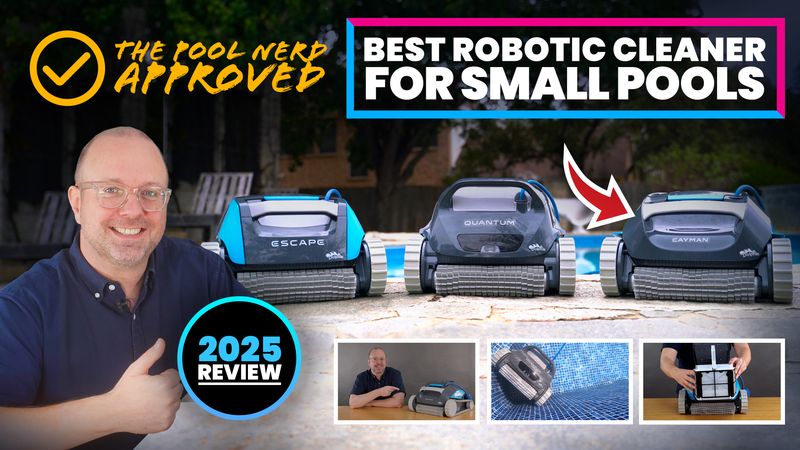Hey there, and welcome back to The Pool Nerd! I’m Justin, your resident pool aficionado. Today, we’re tackling a question I get all the time: What’s the best robotic pool cleaner for small pools?
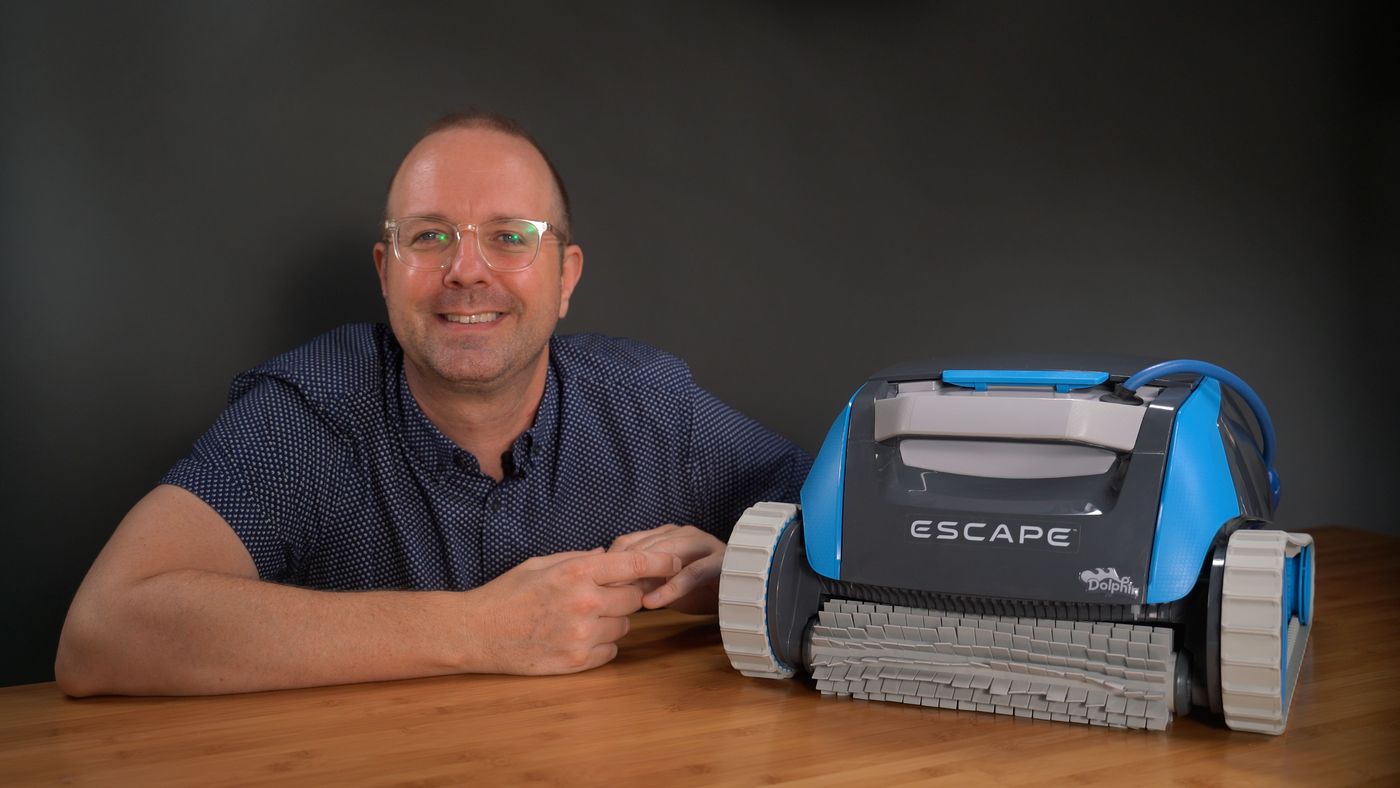
If your pool is 33 feet or less, this guide is for you. And even if your pool’s a little bigger, don’t click away just yet—I’ve packed this with insights on reliability, must-have features, and which models actually deliver the best performance for the price.
After hands-on testing over 30 robotic pool cleaners in pools of all shapes and sizes, I’ve figured out which robots are worth every penny, and which are straight junk. We’ll go over what to avoid, what to look for, and my personal top picks of the year.
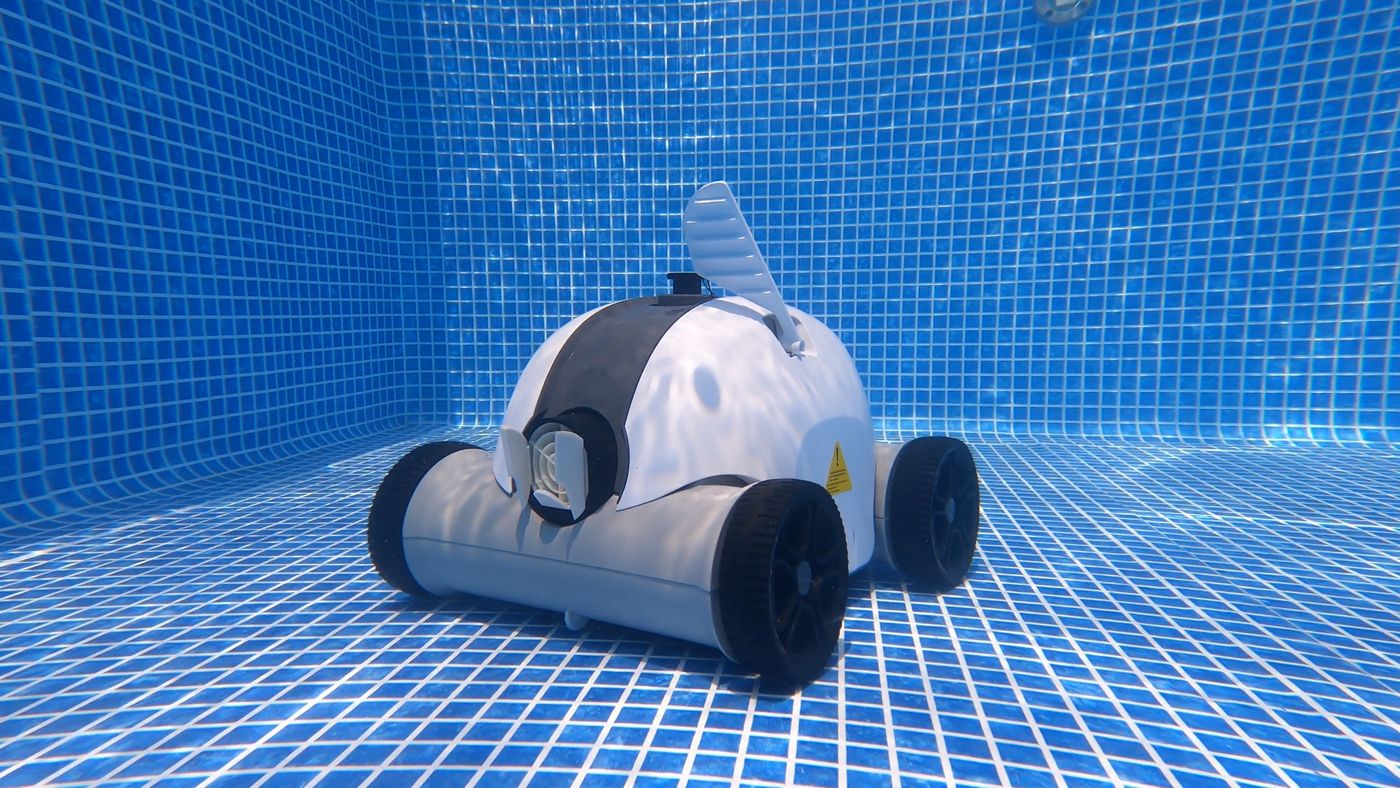
And trust me—you’ll want to stick around until the very end, especially if you’ve ever thought about buying a cordless pool cleaner. Let’s just say, between house fires, battery meltdowns, and major recalls, there’s a lot they don’t mention in the ads. You’re going to want to hear this.
So, let’s jump in.
What is considered a “Small Pool”
Before we dive in, let’s get on the same page. When people talk about small pools, they usually mean anything under 33 feet long. This can be small in-ground or above ground pools.
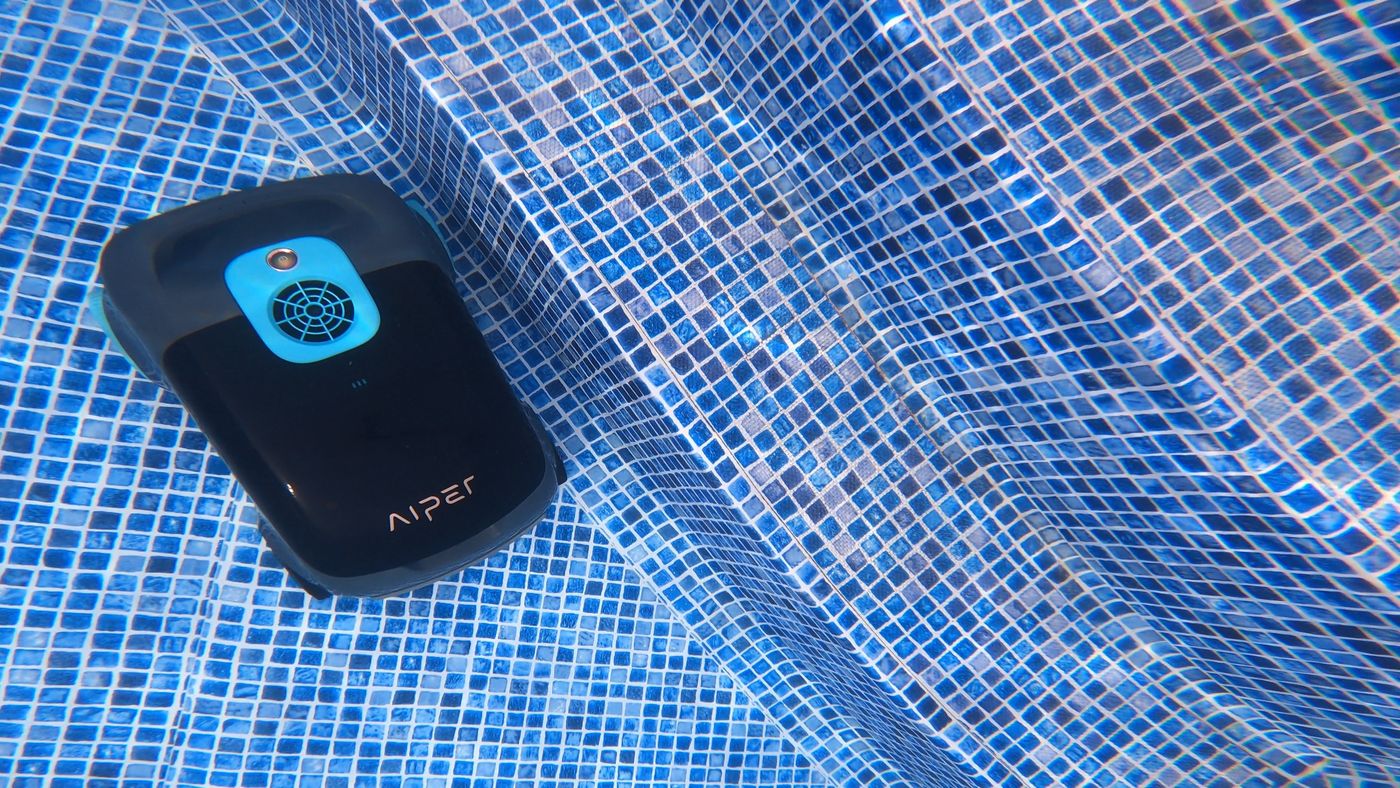
Not every pool needs a $1,500 triple commercial-grade motor robotic pool cleaner. A lot of cheaper models do a fantastic job at a fraction of the price—if you choose the right one.
Now that we’ve covered the basics, let’s talk about what to avoid when looking for a robotic pool cleaner for your pool. Because if you want something reliable, safe, and actually effective, there are a few major red flags to watch out for.
What to Avoid
Cordless or Battery-Operated Pool Robots

If you’ve ever been lured in by the promise of “no cords”, let me stop you right there. After testing a dozen cordless models, I can tell you straight up—avoid them if you can.
Why? Between fire risks, poor suction power, and constant recharging, most cordless robotic pool cleaners are junk. Most battery-operated robots will only clean flat pool floors too. So, it won’t climb the walls or waterline which is something you will want, especially for an inground pool.
It’s a headache waiting to happen. If you want something that’s actually reliable and safe for your small pool, you’ll want to think twice before going cordless.
Fire Hazards
Here’s the thing about cordless robotic pool cleaners—they run on lithium-ion batteries, the same type used in phones, laptops, and electric cars. When they work properly, no problem. But if something goes wrong? It can go really wrong.
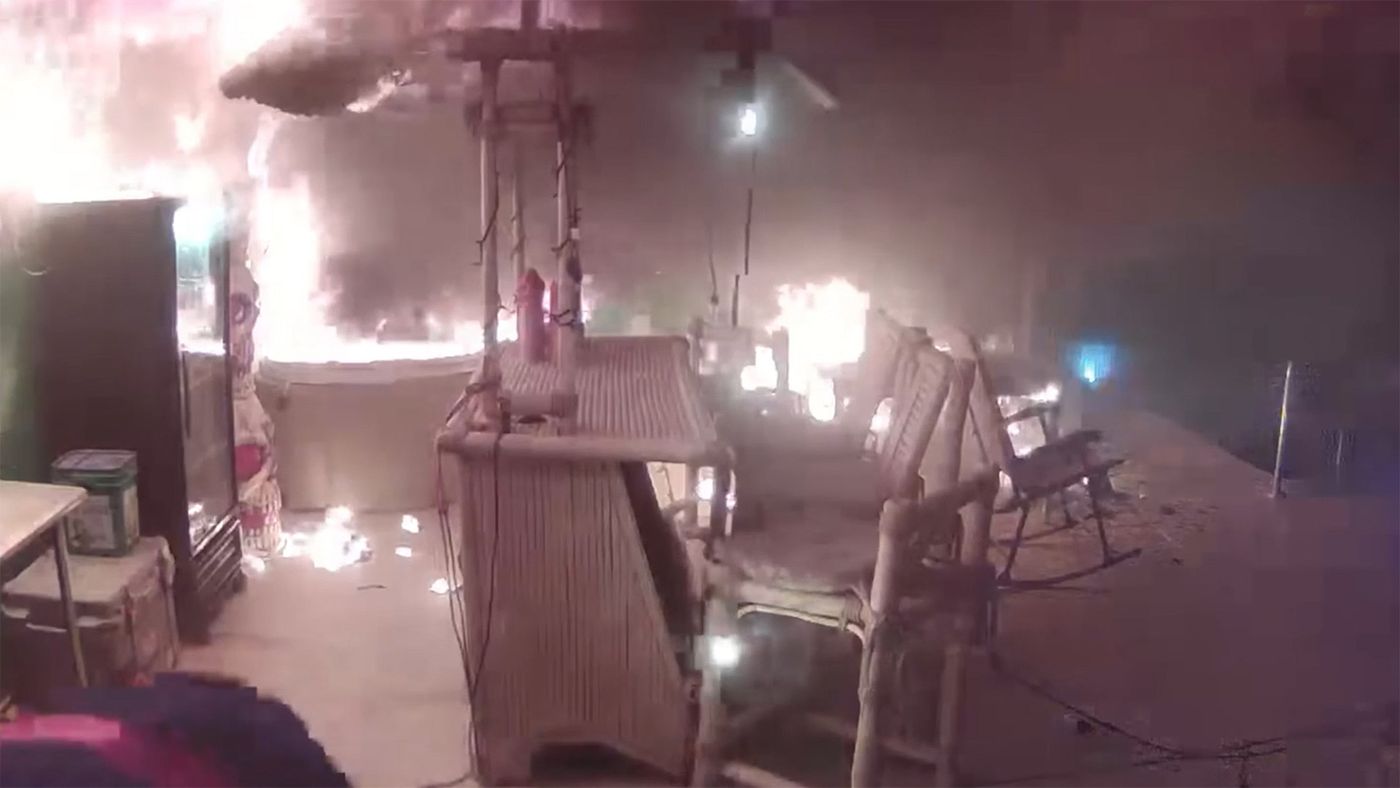
These batteries generate heat, and if there’s a flaw—a faulty charger, a damaged battery pack, or too much exposure to high temperatures—it can lead to serious issues.
There have been reports of cordless pool cleaners allegedly overheating while charging, and in at least one case, a homeowner claimed their cordless Aiper Seagull Pro allegedly started a house fire (Paul show the Fox clip of him saying “I know it was the cleaner cause I saw it). The story made waves online and even the local Fox news. Firefighters had to resuscitate their pet cat, Pooka. Thankfully, everyone—including the cat—was okay, but that’s not exactly the kind of risk you want sitting next to your pool.
Read more on the alleged Aiper fires →
Recalls and Safety Concerns
There have been even more issues with other models as well. The U.S. Consumer Product Safety Commission (CPSC) recently recalled 22,000 Aiper Elite Pro cordless models due to overheating and fire risks. And that’s just one example.

Bottom line? If safety is a priority, think twice before going cordless. Pool cleaners aren’t just about convenience—they should also be reliable, durable, and safe. And right now, battery-powered models carry risks that corded robots simply don’t.
The Hassle of Constant Recharging
Even if you ignore the safety risks, cordless pool robots are way less convenient than they seem. Their battery life? Usually just an hour or two. That means you’ll be pulling them out of the pool, plugging them in, waiting for a charge, then tossing them back in—again and again.
Most of these robots need multiple runs to do a decent job, which turns into a daily chore. At that point, you might as well grab a manual vacuum and save yourself the headache. An “automatic” pool cleaner shouldn’t feel like extra work.
Less Power, Less Cleaning
Cordless cleaners don’t just have smaller batteries—they also have weaker motors and less suction power. If your pool collects even a moderate amount of debris—leaves, twigs, dirt, or sand—you might be in for a disappointment. Instead of actually cleaning, some of these robots just float around, missing spots, barely picking anything up.
Low-Quality Chinese Robots with Fake Reviews
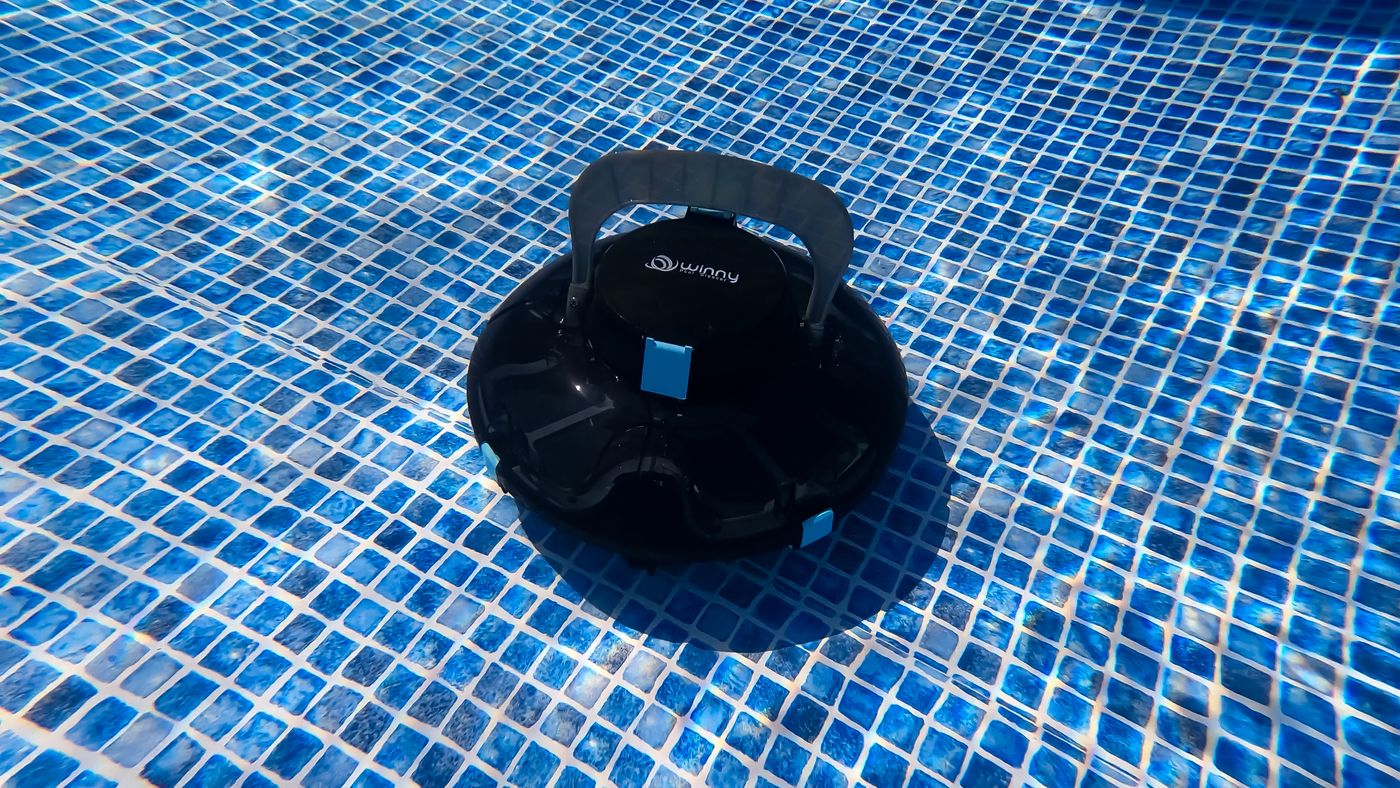
Ever scroll through Amazon and see a robotic pool cleaner with thousands of glowing five-star reviews, only to dig deeper and find that most of them say absolutely nothing useful? Yeah, we’ve been there. And after testing some of these highly rated cleaners myself, I learned the hard way that a lot of those reviews are pure nonsense.
Fakespot
I started getting suspicious when we bought some of these so-called “top-rated” cleaners, only to find they didn’t even come close to living up to the hype. That’s when we ran their Amazon listings through Mozilla’s FakeSpot, a tool that checks for review authenticity.

The results? Brands like Aiper, Beatbot, and Winnie all got F grades. That means a high likelihood of fake or manipulated reviews—and it explained why the glowing five-star ratings didn’t match the reality of what I used in my pool.
Amazon Vine: The Paid-For “Honest” Reviews
Then there’s Amazon Vine, a program where sellers can pay to have their products sent to reviewers for free in exchange for “honest” feedback. Sounds fair in theory, but here’s the catch: when someone gets an expensive product for free, they tend to go really easy on it.
Look at any of these pool cleaners with hundreds of Vine reviews, and you’ll notice a trend—lots of four- and five-star ratings, but when you read the actual feedback, the criticism is way softer than what real buyers experience. It’s not that Vine reviewers are lying, but let’s be real—it’s a lot harder to be mad about a dud when you didn’t pay for it.
What to Look For
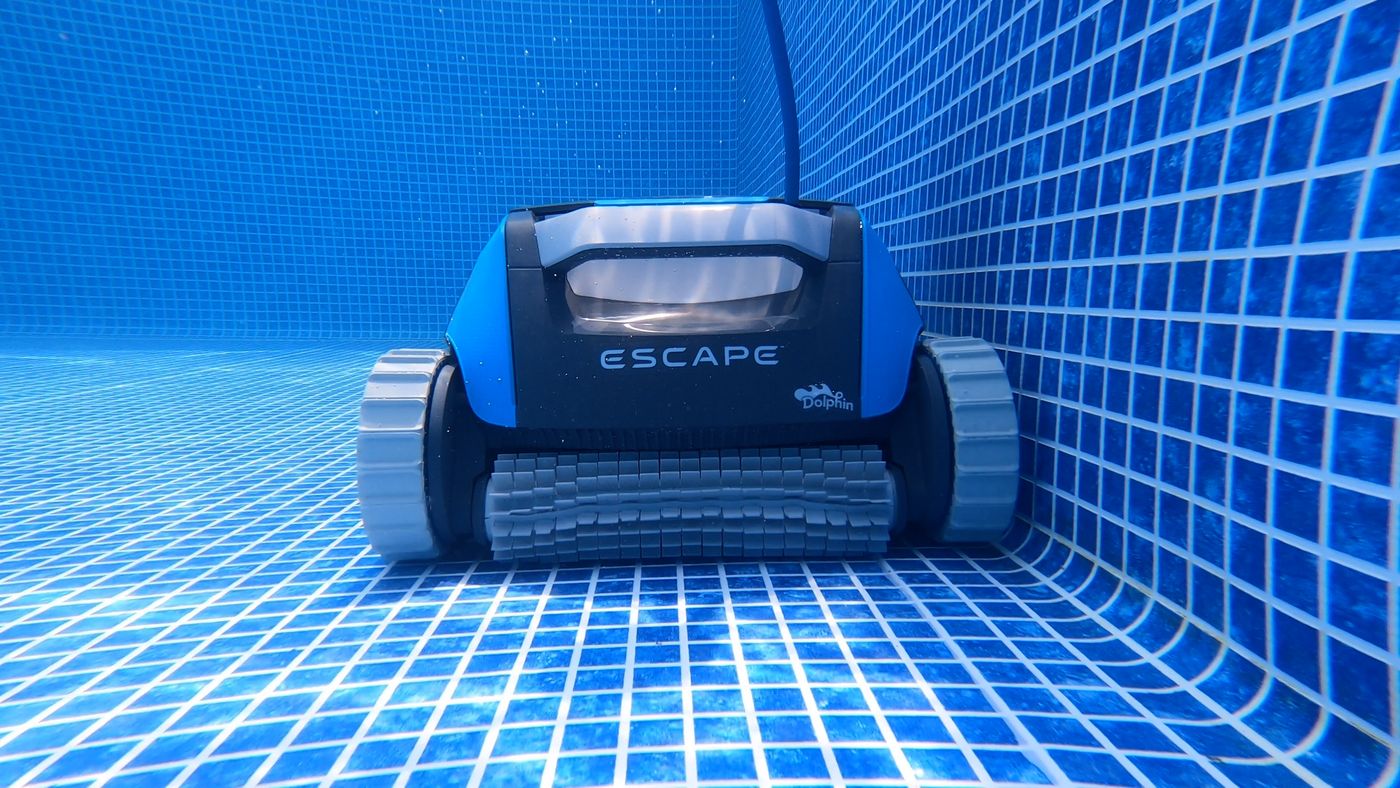
High Suction Power
Whether your pool is 15 feet or 50 feet long, suction power is super important. A small pool can accumulate a lot of debris quickly—especially if you live in a windy area or have overhanging trees. Look for a robot that explicitly mentions strong suction metrics, like gallons per hour (GPH).
You don’t need an overkill, commercial-grade motor like some of the high-end Dolphin models that push 4,500+ gallons per hour (GPH), but you do need enough power to get the job done. A good cleaner should be able to lift debris off the floor, climb walls, and take care of those annoying leaf piles or stray twigs without struggling.
That’s why 4,000 GPH should be your minimum.
Why 4,000 GPH?
Some pool cleaners start strong but lose suction as their filter fills up. That means by the time they’re halfway through cleaning, they’re barely picking up anything. You don’t want that.
A robot with at least 4,000 GPH ensures it maintains suction power even as debris piles up. That way, it keeps cleaning at full strength from start to finish—no slowing down, no half-cleaned pool.

Filtration
Filtration is often overlooked, but it’s arguably as important as suction power. How a robot traps debris matters. Most robots for small pools only include these mesh filters. Standard Cartridge Filters are fine for day-to-day cleaning. They catch leaves and insects, but they’re not enough to thoroughly clean your pool.
They often let small debris, like dirt, sand, and even microscopic algae particles pass through it. Which is why you need NanoFilters.
The Secret Weapon for Crystal Clear Water: NanoFilters

Most people don’t think much about their pool robot’s filters—but they should. NanoFilters aren’t just another upgrade; they’re a total game-changer.
Unlike standard mesh filters, which grab leaves and bigger debris, NanoFilters go after the tiny stuff—dust, pollen, and even algae spores. That’s the difference between a pool that looks clean and a pool that’s crystal clear.
See the Difference for Yourself
I’ve tested both side by side, and the results are obvious. NanoFilters capture way more fine debris—stuff that completely passes through standard filters. It’s one of those hidden secrets in the pool robot world that most people don’t even know about. But once you do? You’ll never go back.
Weekly Timer
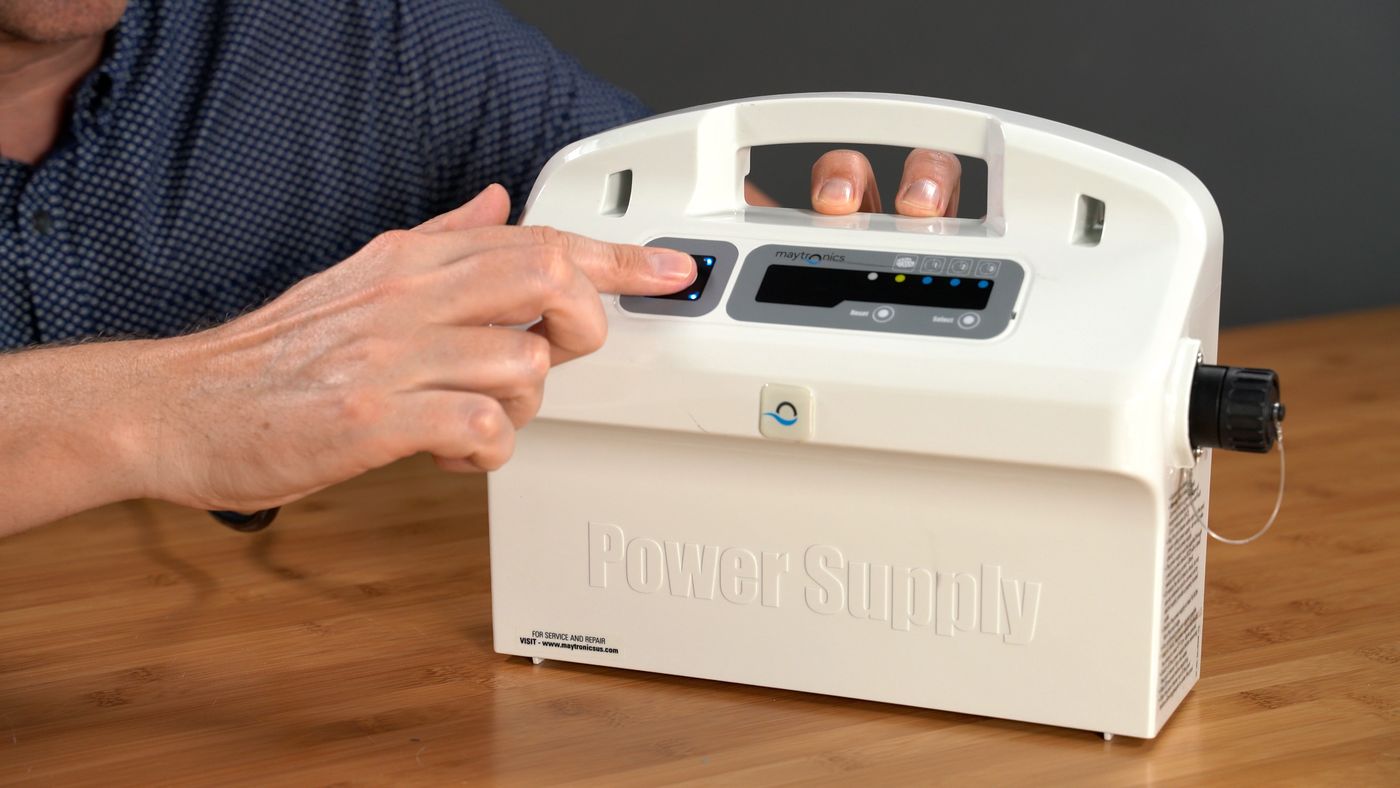
Set it and forget it is the dream for most pool owners. A weekly timer—where you can schedule daily, every-other-day, or every-third-day cleanings—means you don’t have to walk out every single time to press the start button or recharge your robot daily.
This is what real pool automation looks like. I turn the power supply on, press a button, and that’s it—my robot cleans the pool every single day, no effort on my part.
Once you’ve had a cleaner that works like this, there’s no going back. All you have to do is rinse the filter once or twice a week, depending on how much debris is in your pool. It’s that easy.
My Top Picks
Dolphin Cayman
This is hands down my top pick. You want something reliable with strong suction, great filtration, and a weekly timer that makes your life easier—and that’s exactly what the Dolphin Cayman delivers.
Wall Climbing: Because a Clean Floor Isn’t Enough
Some budget pool cleaners only stick to the floor—but not the Cayman. This thing climbs like a pro, scrubbing everything from the floor to the walls, which is exactly where grime loves to hang out. It reaches every inch, so you don’t have to.

HyperBrush Scrubbing: No More Stubborn Gunk
Small pools get dirty fast. Dirt, algae, and whatever else lands in your water sticks to walls and corners before you even notice. The Cayman’s HyperBrush spins twice as fast as standard brushes, so it picks up debris before it has a chance to settle. If you’ve ever spent an afternoon manually scrubbing your pool walls, this is the feature that’ll save you the most time.
MaxBin & NanoFilter Upgrade: A Filtration Game-Changer
But what’s my favorite part about the Cayman? The top-loading MaxBib. It’s way easier to empty than old-school cartridges or filter bags. And if you upgrade to NanoFilters, you’ll catch dust, pollen, and even algae, meaning your water stays crystal clear.
Set It & Forget It: Weekly Timer = Less Work for You

If you want real automation, the weekly timer is a game-changer. Just set it up once, and the Cayman will clean on schedule—so you can just sit back, relax, and let the Cayman clean for you.

How It Handled My Pool
The Cayman blew me away in my 8 x 20 pool. It was able to clean, climb, and scrub better than other robots in this price range. Compared to other cleaners in this price range, it’s the only one in its class with the included Weekly Timer – which made me put it at the top of my list.
Dolphin Quantum
Why It’s On This List—Even for a Small Pool
This is my upgrade pick. If you like what the Cayman has to offer, but want the ProLine performance – the Quantum is for you.
XXL MaxBin

The Dolphin Quantum’s claim to fame is its huge MaxBin filtration system—225% larger than standard cartridges. If you’re someone with a small pool but tons of leaves or debris, the Quantum will let you run multiple cleaning cycles without constantly emptying the filter. It’s larger than the standard MaxBin on the Escape and Cayman, so you won’t need to empty it as often.

PowerJet 3D Mobility and Waterline Cleaning
The Quantum takes it a step further with waterline cleaning. It actively gets to the top of your pool walls where the water meets the air, attacking algae and bacteria build up here. With these side jets, called PowerJet 3D mobility, the Quantum moves horizontally along the waterline scrubbing away.
Weekly Timer
Like many premium Dolphins, it has a weekly timer. You can set it to clean daily, every other day, or every third day. In a small pool, you might opt for shorter, more frequent cycles—another reason the large filter capacity is helpful.

Is the Quantum Too Powerful for a Small Pool? Nope.
You might be thinking, “Do I really need all these extra features in a smaller pool?” Fair question. But the Quantum isn’t just about fancy features—it’s about making pool cleaning easier, more efficient, and less of a hassle.
With its anti-tangle swivel, XXL MaxBin, and waterline cleaning, it’s a solid upgrade pick for anyone who wants next-level cleaning without the hassle. If you’re after stronger suction, better debris capacity, and full pool coverage, the Quantum is absolutely worth it.
Dolphin Escape
If you’re looking for a budget-friendly, but powerful pool cleaner that actually delivers, the Dolphin Escape is the one to beat.
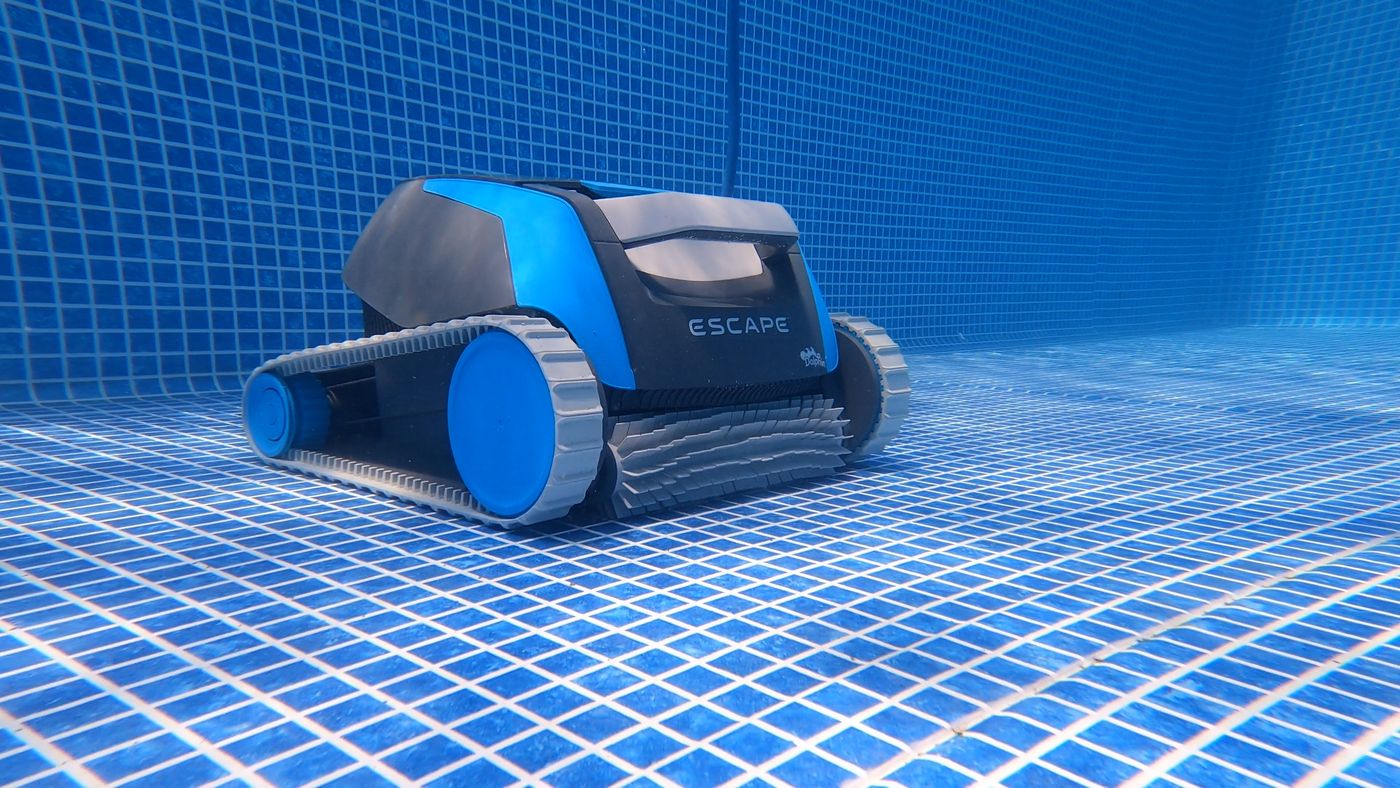
Built for Above-Ground but Works for Small In-Ground Pools Too
The Escape is mainly marketed for above-ground pools, but after testing it in my 8 x 20 in-ground pool, I can tell you—it holds its own. It cleaned just as well as some of the pricier models from other brands, but at a fraction of the cost.
Now, does it have every premium feature? No. You’re giving up wall climbing and a weekly timer—but you’re also saving a ton of cash. And with 4,000 gallons per hour of suction power, it still gets the job done.

Top-Loading MaxBin
The Escape uses the same top-loading MaxBin as the Cayman, which it’s super easy to clean. Just pop it open, rinse it out, and you’re done.
Want to take filtration up a notch? Add NanoFilters. They trap dust, pollen, and even algae spores—stuff that standard filters let slip through. If you want crystal-clear water instead of just "mostly clean," NanoFilters are a must-have upgrade.
Who Should Get the Dolphin Escape?
If you’re on a tighter budget or just want an entry-level Dolphin that cleans well without overcomplicating things, the Escape is a fantastic choice. You won’t get fancy extras like a weekly timer, but if all you need is a dependable, easy-to-use pool cleaner, this one’s hard to beat – especially for above-ground pools.
My Final Verdict
When you’ve got a smaller pool, you don’t need a massive, overpowered cleaner. What you do need is something reliable, efficient, and easy to use. After testing over 30 robotic pool cleaners, here’s my quick take on the best options:
Dolphin Cayman
- Why It’s Great: A perfect mix of performance and value, that has all the essential features like wall climbing, a Weekly Smart Timer, and even the MaxBin.
- Best For: Anyone who wants strong cleaning power without breaking the bank.
Dolphin Quantum
- Why It’s Great: Features a larger filter capacity, anti-tangle swivel, and advanced mobility, making it a rock-solid choice.
- Best For: Those who want a high-end cleaner now, with enough features to keep up if they upgrade to a bigger pool later.
Dolphin Escape
- Why It’s Great: Affordable, powerful, and top-notch filtration – at a fraction of the price of the top robotic pool cleaners
- Best For: Pool Owners who want a powerful clean and don’t need all the bells and whistles.
If you take one piece of advice from this, let it be this:
❌ Avoid cordless/battery-powered robots—they come with fire risks, recalls, frustrating recharging cycles, and weaker performance.
❌ Steer clear of robots with too-good-to-be-true Amazon reviews. If a product has hundreds of 5-star reviews, that’s a huge red flag. Use tools like FakeSpot, and always read the negative reviews first to spot potential issues.
If you wanna keep nerding out over your pool, head on over to my deals page at ThePoolNerd.com/Deals where I post the best deals on robotic pool cleaners and other pool equipment.
Your resident pool aficionado.
For over 5+ years, The Pool Nerd has been a leading source in the swimming pool industry. With years of experince owning a swimming pool, our hope here is to guide and help making owning a swimming pool easier.
